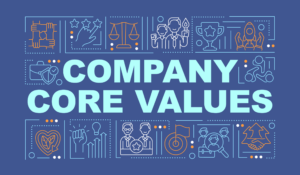We’ve all heard the refrain that people join companies, but they leave managers. Organizations know how important it is to have motivated, engaged employees. But most fail to hold managers accountable for motivating and engaging their employees, and for making choices that keep employees happy long term.
Managers shaken by high turnover might tell you that yes, poor employee engagement plays a role. But, they’ll hasten to add, it’s hard to engage people who constantly have one foot out the door. Still, managers are in the business of managing people. University of California researchers found that motivated employees were 31% more productive, had 37% higher sales, and were three times more creative than unmotivated employees, according to the leadership consultancy LearnLoft.
Motivated employees were also 87% less likely to quit, according to a Corporate Leadership Council study of over 50,000 people. And Gallup research shows that a mind-blowing 70% of an employee’s motivation is influenced by their manager.
What are some of the most common engagement mistakes that managers make? And what can they do differently, to reap the rewards of a happy, engaged workforce?
Problem: Failing to communicate
In many companies, employees frequently claim they don’t know what’s going on, and that management doesn’t want to know what they think. That’s due to both a lack of actual communication and because managers use the control of information to ensure they remain valuable to the organization.
Solution: Employee surveys
It’s important to give your focused, undivided attention when your employees bring you information or concerns. That’s the only way you’ll let them know what their input is valuable. Your people must always come first – they look up to you for guidance, information, and support. If they feel they can count on you for clear, two-way communication, they will trust you.
Problem: Failing to recognize and reward good work
It’s easy to underestimate the power of a pat on the back, especially with top performers who are intrinsically motivated. Everyone likes to have their work acknowledged, none more so than people who give their all.
Solution: Developing a reward system
Managers need to find out what makes their people feel good (such as a raise, public recognition, or more vacation time) and then reward them for a job well done. With top performers, this will happen often if you’re doing it right.
Problem: Overworking good people
Nothing burns out good employees quite like overworking them. Managers frequently fall into this trap. Overworking good employees is perplexing; it makes them feel as if they’re being punished for great performance. Overworking employees is also counterproductive. Research from Stanford shows that productivity per hour declines sharply when the workweek exceeds 50 hours.
Solution: Task management that aligns with seniority and pay
Talented employees will take on a bigger workload, but they won’t stay if their job suffocates them in the process. Raises, promotions, and title-changes are all acceptable ways to increase workload. If you simply increase workload because people are talented, without changing a thing, they will seek another job that gives them what they deserve.
Problem: Failing to develop people’s skills
The most talented employees want feedback — more so than the less talented ones — and it’s your job to keep it coming. If you don’t, your best people will grow bored and complacent.
Solution: Proactive skill expansion
Good managers manage, no matter how talented the employee. You pay attention and are constantly listening and giving feedback. When you have a talented employee, it’s up to you to keep finding areas in which they can improve to expand their skill set.
Problem: Failing to motivate
Can you safely say what drives your team to strive to be better every day? If your first guess is money, you should probably guess again. A team is a group of people that together achieve joint success or failure. Each member makes their contribution towards the end result and each of these people have unique views and motivations for the work that they do.
Solution: Practicing listening
Listening is essential for finding out what drives each team member. Leadership and management are, first and foremost, a people’s job. Leaders are responsible for steering each team member toward achieving their best results and making the best contribution they can to your team’s success.
Engagement tools that get you on the right track
No technology can replace the value of meaningful human interaction in the workplace. A manager’s look of appreciation, pat on the back, or heartfelt thank you can go a long way in helping to engage employees and establishing a more productive workplace culture. But there are tools that can help you amplify that human interaction – and the positive changes it brings about.
The most effective tools give you these four capabilities.
- Hear your employees. Get employee ideas, insights, and opinions with instant feedback surveys and polls. Keep your finger on the pulse of your culture so you can stream future content that hits home.
- Analyze metrics. View employee engagement levels, satisfaction, knowledge scoring, content advocacy, app usage, gamification stats, and more so you can adapt programs for maximum performance.
- Reward & recognize. Reward and recognize employees who view and share content with points and badges that may be redeemed for prizes and certificates. Create a band of brand ambassadors.
- Inform & inspire. Keep employees plugged in with interactive content, leadership messaging, new product/service training, and fast-track career advancement opportunities.
Ultimately, you would find all of these capabilities in a single, all-in-one app that’s a screen-touch away on a mobile device. Do you have access to the tools you need to execute on these four capabilities – especially if you have a workforce that’s on the go?
If your employee engagement program lacks such a platform, it’s time to consider a tool like HubEngage. Its singular purpose is to help you maximize your employee engagement program to unleash the power of an engaged workforce. Reach one of our product specialists today to schedule a complimentary demonstration.













